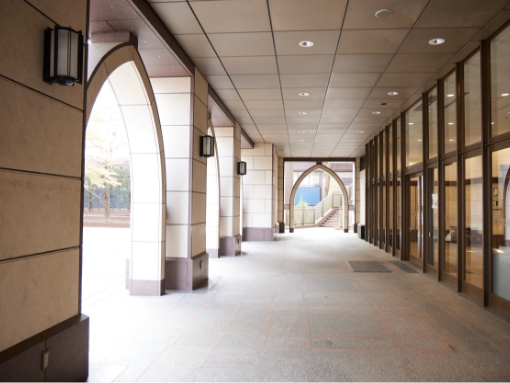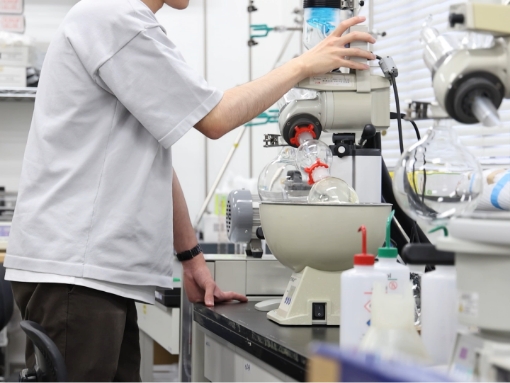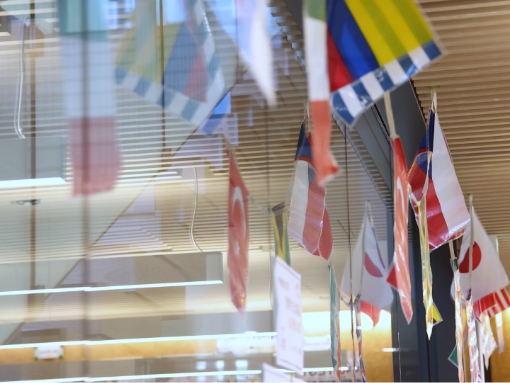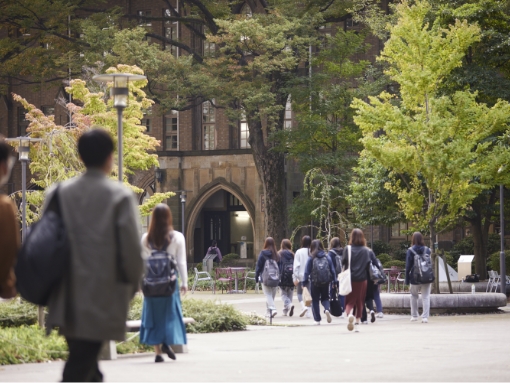Discover Japanese performing arts: Gagaku, ceremonial court music
3 Jul 2025
With the support of Kasumi Kaikan, a general incorporated association, the International Centre provides international students with opportunities to enjoy Japan's traditional performing arts. On June 21, 2025, the Centre held a special viewing class of "gagaku," Japanese ceremonial court music, at the Gakushuin 100th Anniversary Memorial Hall. A total of 40 international and Japanese students from Gakushuin University and Gakushuin Boys' and Girls' Senior High Schools attended the event. The instructor was Mr. Noriaki Mita, a Gakushuin alumnus and professional gagaku performer active in Japan and abroad.
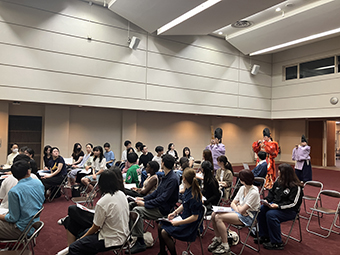
The event started with the music performance of "Konju no Ha," representing an intoxicated man from a non-Han ethnic group during ancient China.
It was the first contact with gagaku for most of the audience, including international students. Mr. Mita outlined the history of gagaku and explained gagaku musical instruments, such as Hichiriki recorder, Ryuteki flute, and Biwa lute. Gagaku, a form of traditional Japanese court music, is often perceived as difficult to approach, even by Japanese people. Thanks to Mr. Mita's easy-to-understand and fascinating explanation, however, the students found the profound nature of gagaku and began to feel close to this performing art. The participants were all attentive to his lecture.
Following the lecture, the gagaku performers played several music pieces, including "Etenraku," one of the most famous gagaku pieces usually played at the time of the three-times-three exchanges of nuptial cups at a Japanese wedding ceremony.
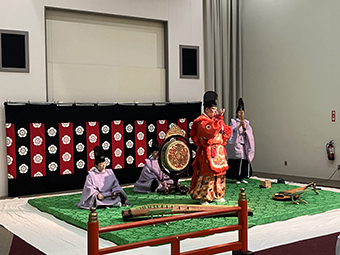

The beautiful and solemn harmony of different musical instruments was overwhelming, shaking the air in the hall.
After the performance, the participants all tried to write "Imayo" songs. Imayo is an ancient verse form consisting of four lines each divided into two parts of seven and five syllables. Over 1200 years ago, the nobility in the Heian period wrote lyrics describing the beauty of each season and sang the self-made songs in tune with the melody of Etenraku.
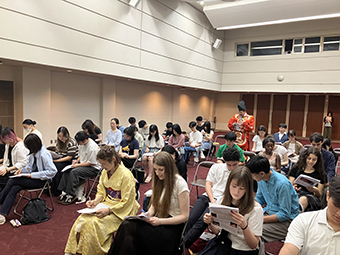
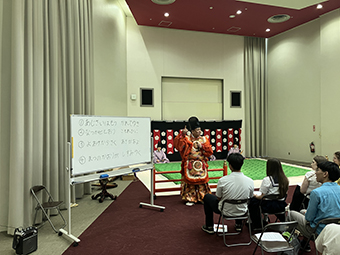
All seriously tried to come up with their original Imayo lyrics. They enjoyed appreciating their creations, writing them on a white board and singing them loudly.
One of the excellent lyrics picked out by Mr. Mita celebrated the change of seasons from rainy weather to summer.
At the end, the performers played a traditional Japanese court music, titled "Ranryo Ou" (Prince of Lanling).
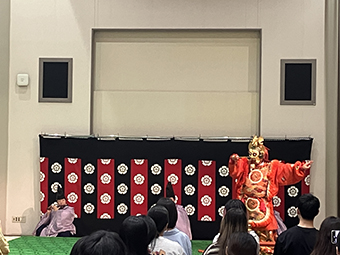
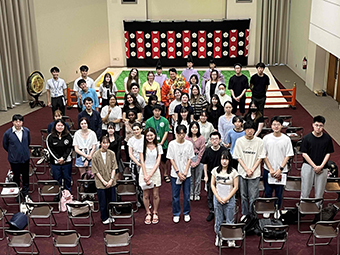
The two-hour event seemed like a moment. The comments received from the participating students indicate that they were absorbed in the performance and lecture. Below are some of the comments.
- "Mr. Mita's explanation was easy to understand. I was able to get more knowledge than I could have just by watching the show."
- "The tones of the instruments were pleasant."
- "It was an invaluable opportunity as there are not many chances to enjoy gagaku."
- "I wish we could have had more time to write Imayo lyrics."
This must have been a very meaningful opportunity for both international and Japanese students to be exposed to traditional Japanese music and dance.


